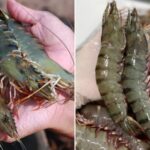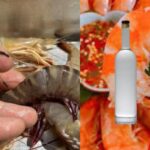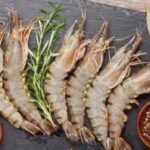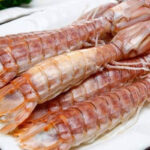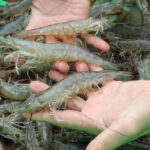Should You Boil Shrimp in Hot or Cold Water?
Boiling shrimp: hot or cold water?
Boiling shrimp is a simple yet effective method to retain their fresh and delicious flavor. However, many people don’t know the correct way to boil shrimp, which can result in overcooked, tough, and pungent-smelling shrimp.
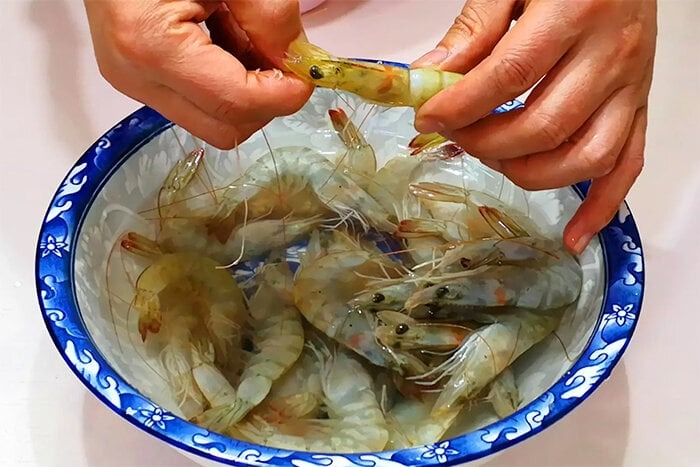
Boiling shrimp is a simple yet effective method to retain their fresh and delicious flavor.
There are two commonly considered methods: using hot or cold water. Neither of these methods is optimal. Boiling shrimp in cold water can prolong the cooking time, making the shrimp rubbery and tough. On the other hand, dropping shrimp directly into boiling water will cause the shells to contract, trapping the fishy odor and diminishing the shrimp’s flavor.
The best way to boil shrimp is to wait until the water starts to bubble, and then add the shrimp. This method ensures even cooking, resulting in tender and flavorful shrimp.
Steps to boil perfect shrimp
To achieve perfectly boiled shrimp, follow these steps:
Preparation: Clean the shrimp and trim the whiskers. Do not remove the heads as they add sweetness. Place the shrimp in a bowl, add a dash of rice wine, and a few slices of ginger. Soak for 15-20 minutes to eliminate any fishy smell.
Boiling: Boil a pot of water with a few slices of ginger and scallions. Once the water starts to bubble, add the shrimp. Do not cover the pot to allow the odor to escape, resulting in more flavorful shrimp.
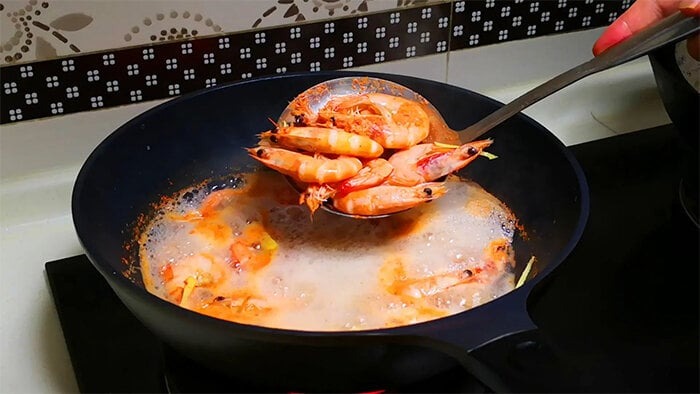
Boil water with ginger and scallions for the best flavor.
Remove the shrimp: Boil the shrimp for approximately 3 minutes until they turn opaque. After they’re cooked, immediately plunge them into a bowl of ice-cold water. This process helps the shrimp retain their texture, keeping the meat firm and the color vibrant.
How to select the best shrimp
Check for freshness: Gently pull on the shrimp’s body and observe the width of the gap between the shell and the meat. A wide gap indicates that the shrimp is old or has been stored poorly. Fresh shrimp have a narrow gap, a slightly curved body, and firm meat.
Choose wisely: Avoid overly large shrimp or those with abnormally thick meat, as they may have been injected with chemicals or soaked in preservatives. Fresh shrimp have firmly attached heads, flexible shells, and legs that don’t fall off easily.
Avoid low-quality shrimp: Stay away from shrimp that are slimy, gritty, or stuck together, as these are signs of deterioration and indicate that the shrimp are not fresh.
boiling-shrimp-achieving-succulent-sweetness-and-a-vibrant-red-hue/’ title=’The Ultimate Guide to Boiling Shrimp: Achieving Succulent Sweetness and a Vibrant Red Hue’>The Ultimate Guide to Boiling Shrimp: Achieving Succulent Sweetness and a Vibrant Red Hue
The Secret to Keeping Shrimp Fresh for Up to Six Months: Don’t Refrigerate, Try This Instead
Shrimp is a popular delicacy, enjoyed by many. However, not everyone knows the correct way to store shrimp. With my expert knowledge, I can guide you through the process, ensuring your shrimp stays fresh and tasty. Imagine your dishes enhanced with perfectly preserved shrimp, taking your culinary creations to the next level.

























